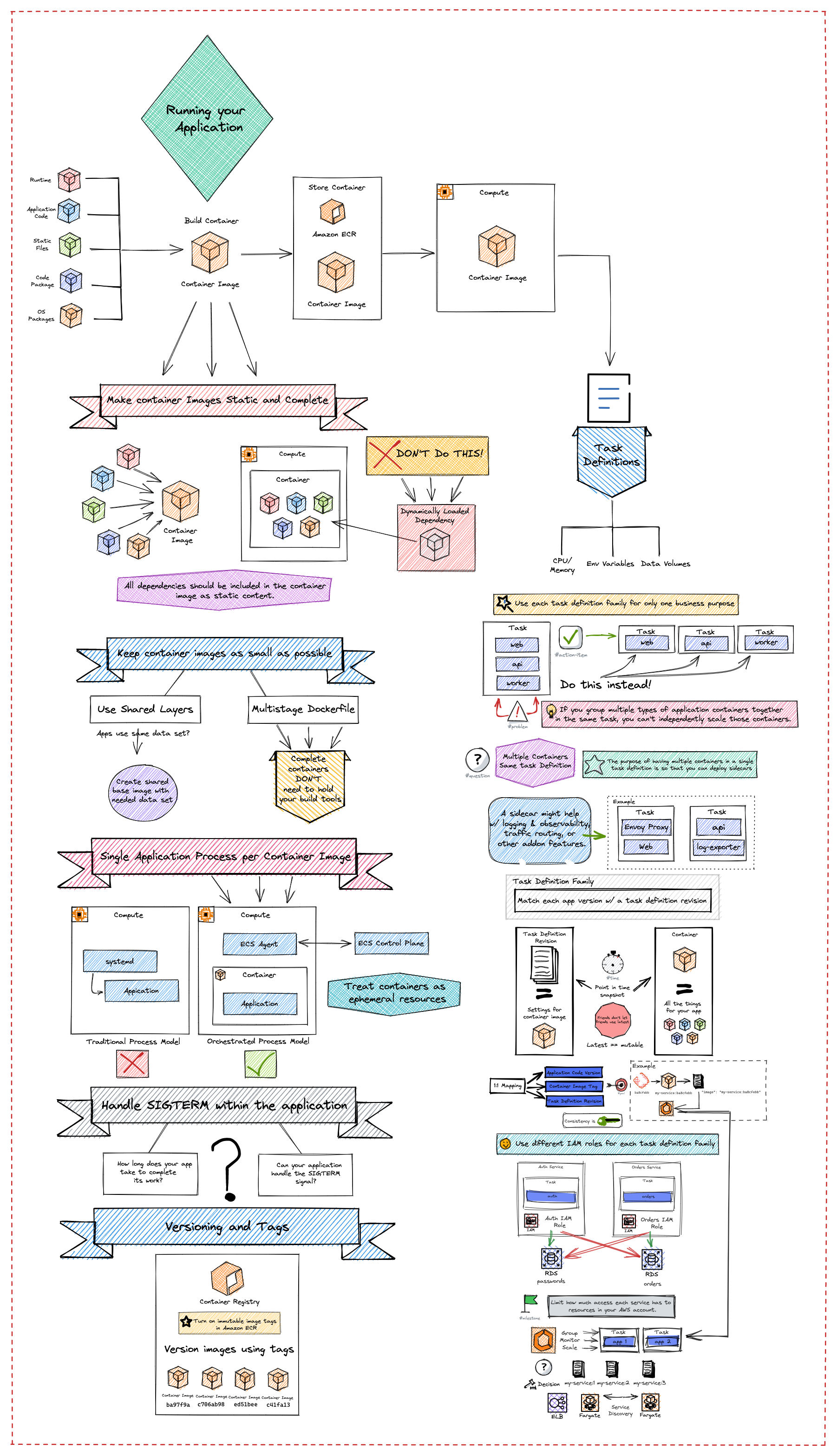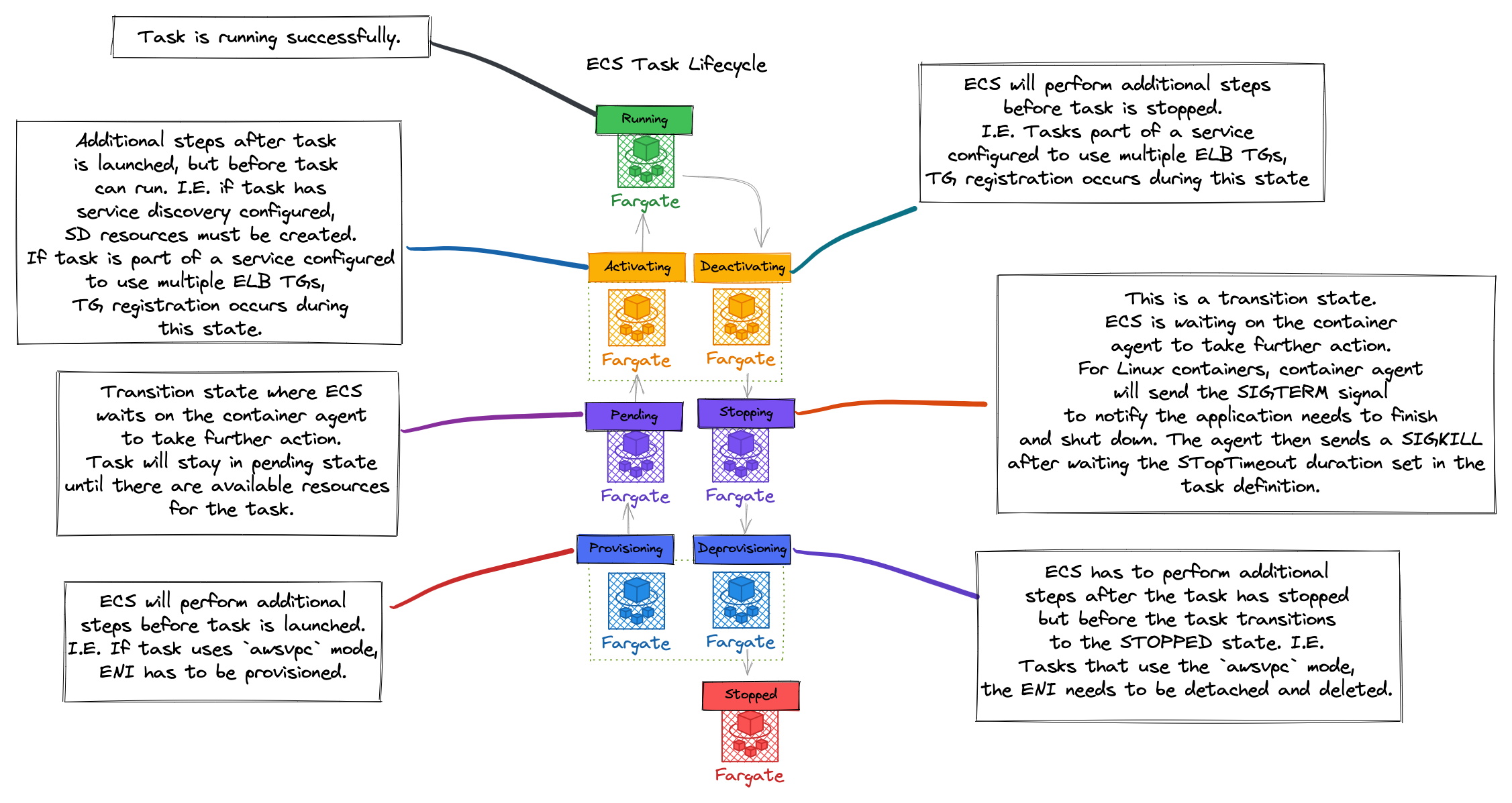Container Platform Best Practices: Networking
This visualization presents the best practices for building a network where the components of your application can communicate with each other securely and in a scalable manner.
Container Platform Best Practices: Security
This visual provides security and compliance recommendations for protecting your information, systems, and other assets that are reliant on Amazon ECS. It also introduces some risk assessments and mitigation strategies that you can use to have a better grip on the security controls that are built for Amazon ECS clusters and the workloads that they support.
Container Platform Best Practices: Running Your App
Before you run an application using Amazon Elastic Container Service, make sure that you understand how the various aspects of your application work with features in Amazon ECS.
Amazon ECS Task Lifecycle
When a task is started, either manually or as part of a service, it can pass through several states before it finishes on its own or is stopped manually. This is a visual representation of what an Amazon ECS task lifecycle looks like.
EC2 or AWS Fargate?
There are two main compute options for running containers with Amazon Elastic Container Service:
EC2 (Deploy and manage your own cluster of self managed virtual machine instances that can each run one or more containers) AWS Fargate (Run containers directly, without any virtual machines to think about) Both are completely valid techniques for operating your containers in a scalable and reliable fashion.
Comparison of Amazon EC2 and AWS Fargate across pricing, performance, and administrative overhead, with examples of best fits for each compute option.






